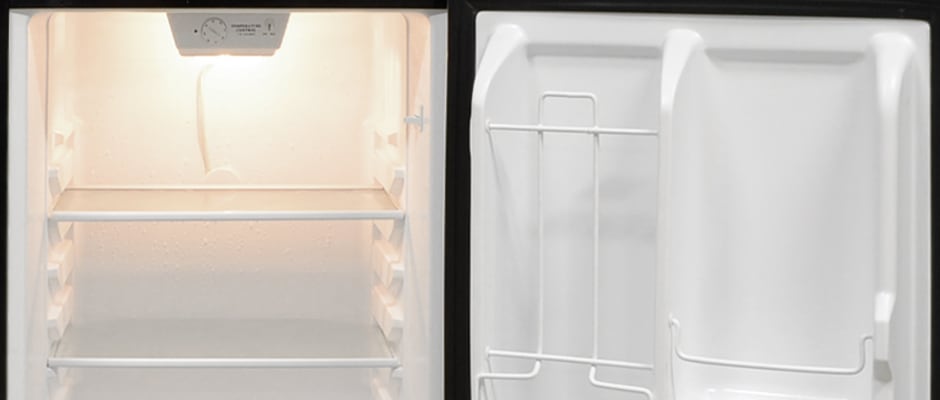Pros
Cons
Introduction
Front
{{section_header}}{{section.name}}{{/section_header}}
Two doors adorn the front of this refrigerator: one on top for the freezer, one taller one underneath for the fresh food. It's got a stainless look to it, but it feels like plastic. It's unusual, anyway, and about as close to a conversation piece as a mini fridge is going to get.
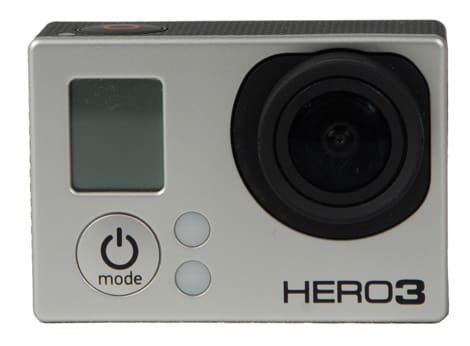
The stainless-like finish is quite resistant to fingerprints and smudges. It's bright enough that they don't show up easily, and even if they did, the "metal" grain is so prominent that you'd hardly notice anyway.

Temperature is adjusted using a small knob inside the fridge, just within the door frame on the upper edge. There's a convenient little reminder written next to it informing you that "7" is the coldest setting.

The handles for both doors are recessed, giving the fridge a smooth exterior. The doors are reversible, as well, so it'll be a good fit in any kitchen regardless of its layout.

Interior
{{section_header}}{{section.name}}{{/section_header}}
The shelves in the fridge are glass, but everything else inside the two compartments is made up white or clear plastic.
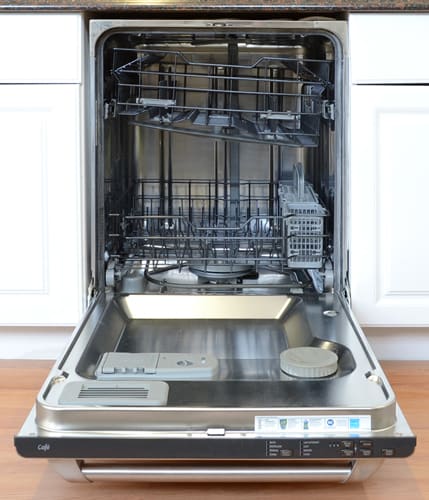
The interior of the CDWT980VSS.
The fridge has two proper shelves that can be adjusted. At the bottom is a third shelf that serves as the lid to the drawer located on the very bottom. This shelf lines up with a plastic outcropping, a result of the condenser's location at the bottom of the appliance.
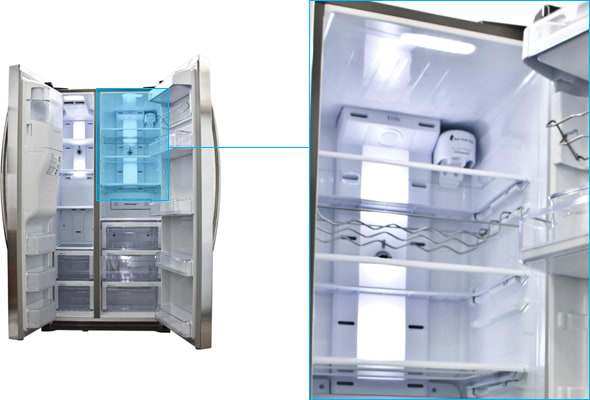
Water will collect in beads on the rear of the main fridge compartment, a result of its lacking any sort of defrost cycle.
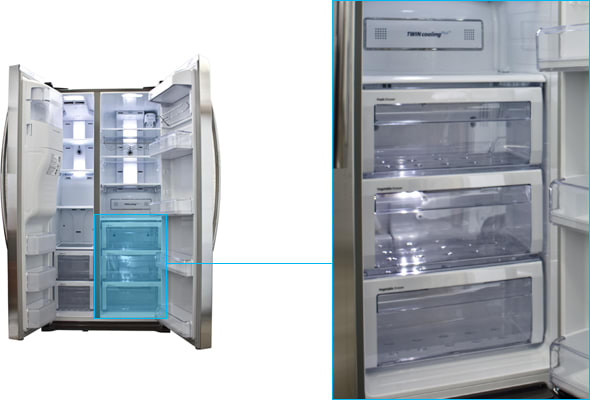
This water then pools down into a tiny spout. If it's too cold, the water can freeze; this is more of an issue in the freezer. To remove that, the manufacturer's have included a small plastic ice scraper designed to safely chip away at any ice build up without damaging the interior walls.
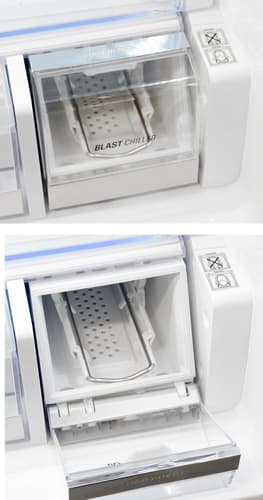
The crowning feature of this product is very easy to use and doesn't take up much room.
The fridge door likes like what you'd find on a basic one-door model. Two shelves and a can dispenser—it has a four can capacity—are provided for additional storage.
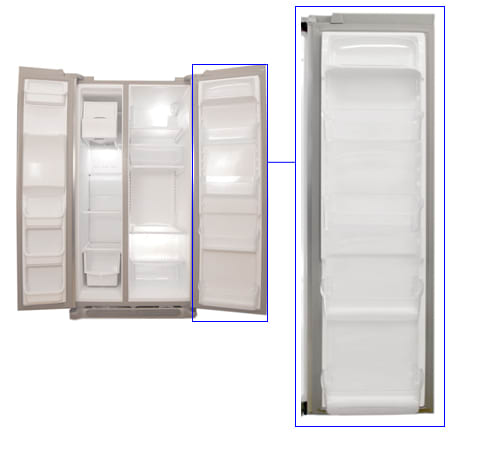
Echoing its big brothers in the fridge world, the {{product.brand.name}} has a wire shelf that divides the freezer into an upper and lower section. There's no other ledge, which means the shelf is removable but not adjustable.
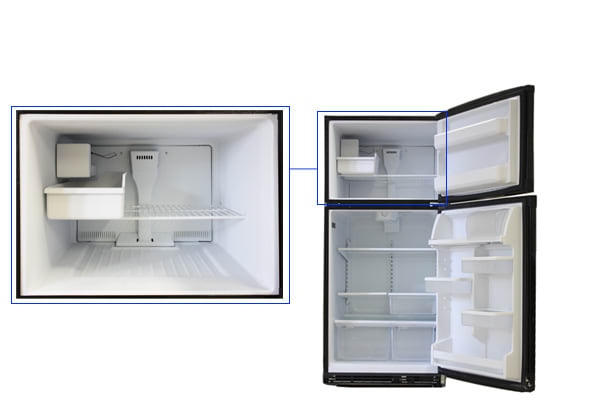
The freezer door serves the same purpose as the lid on a cooler. There aren't any shelves, just a flat plastic service designed to keep the cold air in.
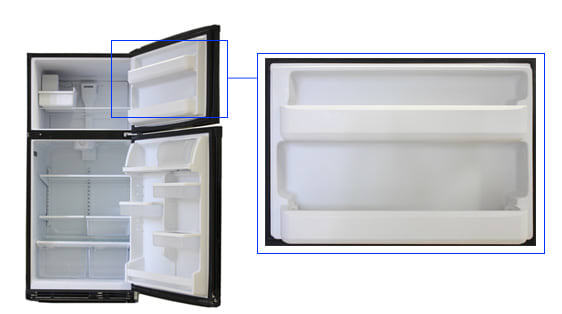
Back
{{section_header}}{{section.name}}{{/section_header}}
The rear of the {{product.brand.name}} is covered with a black, heavy duty cardboard with a gap at the bottom that exposes the fridge's internal machinery.
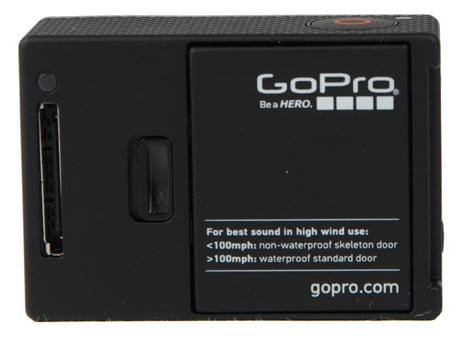
Sides
{{section_header}}{{section.name}}{{/section_header}}
The sides are finished with the same sort of glossy black coating that you'd normally see on the front of a basic one-door mini. It clashes a bit with the stainless-like front, but compact fridges like this aren't banking on good looks as much as they are on size and convenience.

Olympus SZ-31MR iHS side views
Running Cost
{{section_header}}{{section.name}}{{/section_header}}
While it won't cripple your bank account by any means, the $27.22 that you'll have to pay every year to power the {{product.brand.name}} is definitely more than you'd have to shell out for a standard sized mini fridge. In fact, it's nearly double the rates that we saw on other, average models. We reach that figure by using a standard rate of $0.09 per kW-h, so keep in mind that it may be more or less depending on the energy costs in your area.
Power Use Per Cu Ft
{{section_header}}{{section.name}}{{/section_header}}
Even accounting for extra storage space, the {{product.brand.name}} turned out to be a fridge with poor energy ratings. For every cubic foot of usable space, it requires 0.25 kW-h. Unlike the annual bill, this isn't necessarily twice as poor as smaller models, but it's definitely worse, even compared to full-sized fridges.
Fridge Temperature
{{section_header}}{{section.name}}{{/section_header}}
From top to bottom, there was an average temperature difference in the fridge compartment of just about two degrees. It's not perfect, but its some of the best levels of consistency we've seen in mini fridges; even a full-sized model would be hard pressed to compete. On top of that, temperatures fluctuated less than 0.2 degrees over time, making this a very consistent product that will take good care of your food.
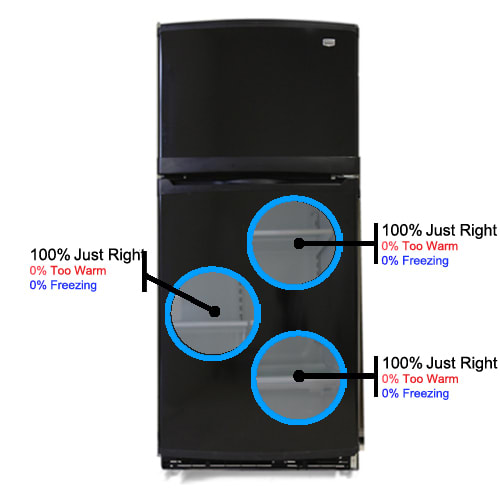
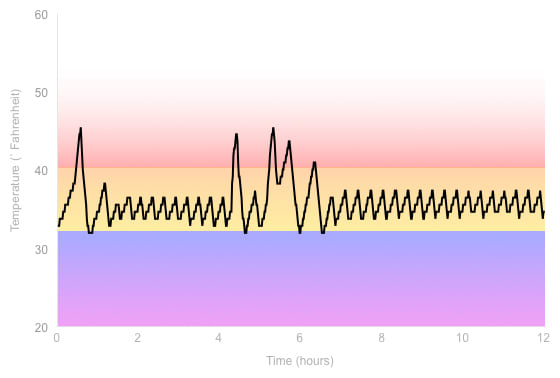
Freezer Temperature
{{section_header}}{{section.name}}{{/section_header}}
The freezer wasn't quite as spot-on as the fridge, but it still did a decent job. Even though the compartment is smaller than the fridge, temperatures in the freezer also varied about two degrees from top to bottom. Fluctuation over time was about 0.35 degrees, which is fair, though getting closer to levels that are undesirable. As long as you don't plan on going to Costco and stocking up for the winter in one go, you should be fine.
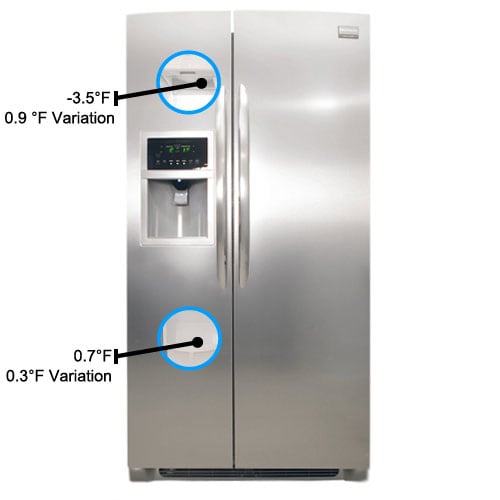
Vegetable Drawer
{{section_header}}{{section.name}}{{/section_header}}
The tiny drawer at the bottom of the fridge is shallow, difficult to remove, and has no humidity control...and yet it turned out to offer some of the best moisture retention that we've ever seen. Moisture loss fluctuated a bit day to day, but the average rate after four days of testing came out to just 0.12 grams of moisture loss per hour. This is absolutely fantastic, better than many fridges we've tested regardless of size or retail value. It's a shame that the drawer is so small, since it's going to take very good care of any fresh produce that you purchase.
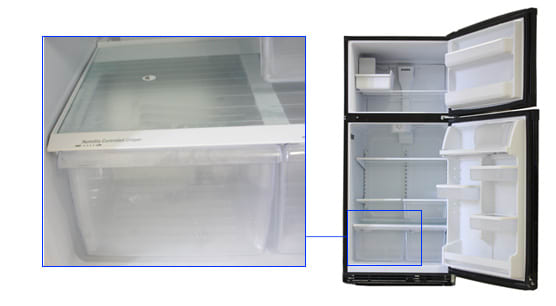
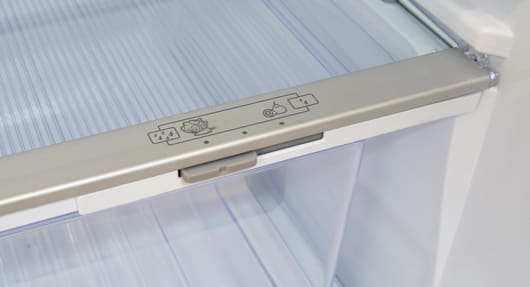
Power Loss
{{section_header}}{{section.name}}{{/section_header}}
It nearly made it! After just over 31 and a half hours without power, the {{product.brand.name}}'s freezer officially defrosted. This would be quite bad for a full-sized fridge, but for a mini, it's pretty darn good. As long as you leave the freezer door shut if the power goes out, your food should be safe for at least a day.
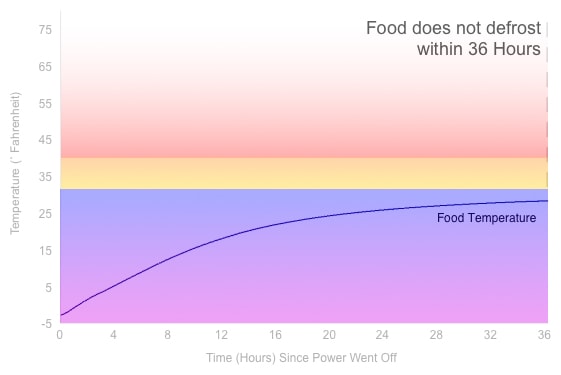
Freezing Performance
{{section_header}}{{section.name}}{{/section_header}}
This test produced the single worst result for the {{product.brand.name}}. Room temperature items took a whopping two hours and four minutes to reach freezing, which is enough time to have a potentially negative impact on the thawed texture of certain foods. If you're buying filet Mignon or a really nice cut of fish, make sure you eat it that night; this freezer is not as considerate of quality foods as we might like.
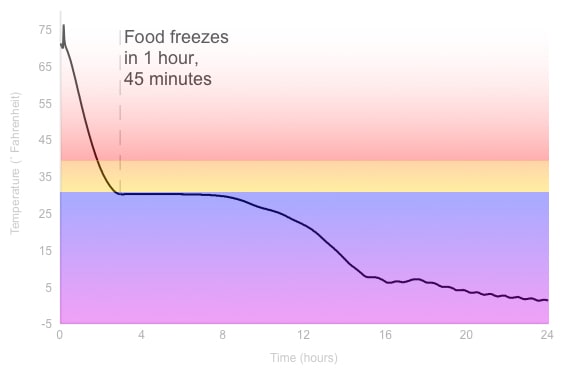
Usable Space
{{section_header}}{{section.name}}{{/section_header}}
The biggest flaw here is that the shelves are fairly shallow compared to the size of the fridge cavity. Presumably designed as a deterrent for consumers that like to over stock and shove things up against the rear wall—remember that moisture collects on the back of a mini fridge's interior—it resulted in a total of 2.21 cubic feet of fresh food storage. That's spread out over the three shelves and the disappointingly shallow bottom drawer.
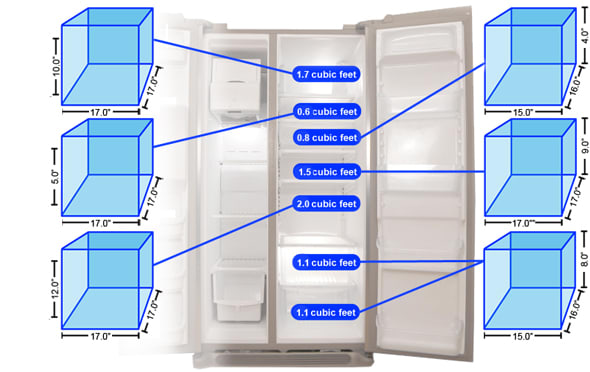
Two shelves and a can rack found on the fridge's door contribute to fresh food storage. The can dispenser is pretty much a one-trick device; if you don't plan on stocking cans, you'll likely end up wasting space. In case you were wondering, it can hold a total of four standard cans at a time.
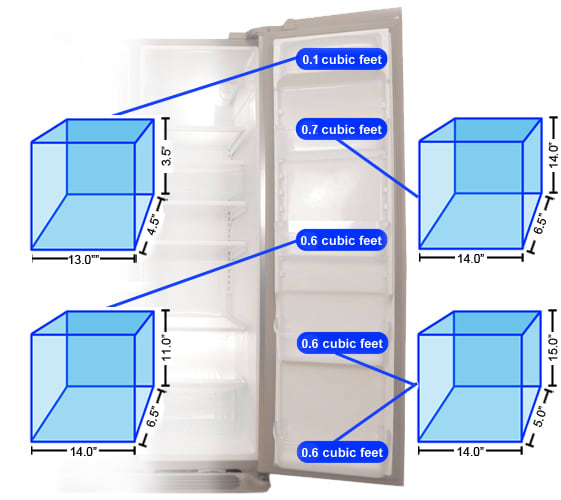
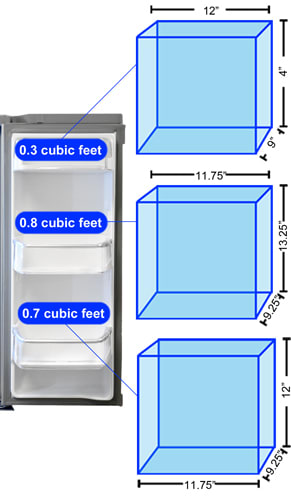
Freezer storage consists of a large cavity—literally an ice box if you don't take the time to defrost it—that is broken up by a wire shelf into an upper and lower section. All together, it can hold up to 1.11 cubic feet worth of frozen goods. That's substantially more than what you'd find in a one-door mini, meaning you can store a larger variety of items. It's still not big enough to fit the Thanksgiving turkey, but at least you can get more than one Lean Cuisine in it.
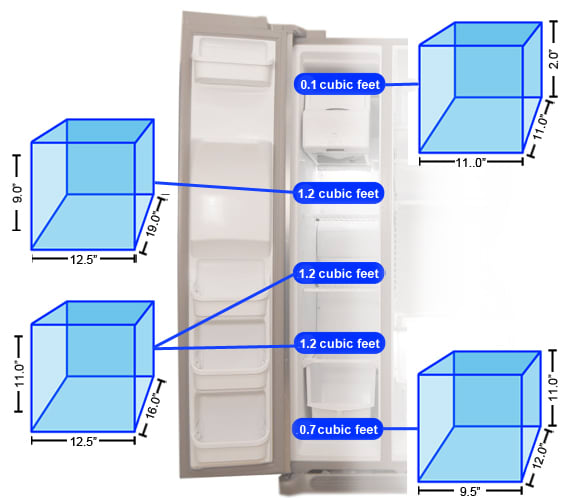
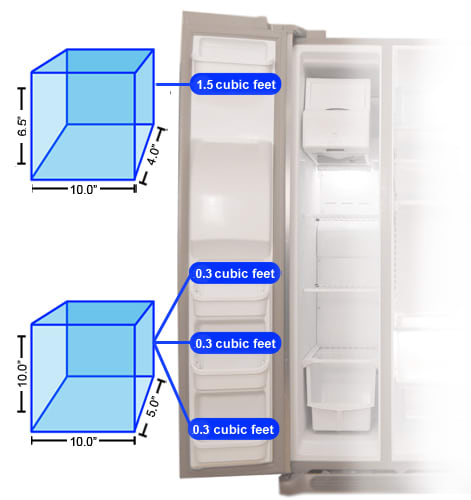
Below are the manufacturers own figures for capacity, and our own measurements for usable capacity. The manufacturers figures do not take account of the shelves, drawers and other removable features, but our measurements do account for the space these take up.
Ease of Access
{{section_header}}{{section.name}}{{/section_header}}
The taller layout means shelves are easy to access, but the trick here is the storage itself. Fridge shelves are shallower than the unit itself, presumably to prevent consumers from placing items up against the very back where moisture can gather. Alternatively, the fridge's height means more food is closer to eye level than in an average mini fridge.
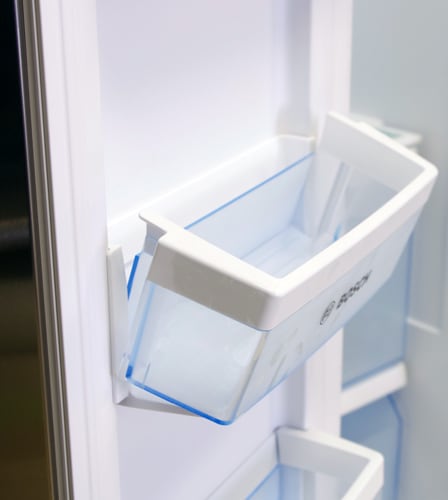
Controls
{{section_header}}{{section.name}}{{/section_header}}
Temperature is adjusted using a small knob inside the fridge, just within the door frame on the upper edge. There's a convenient little reminder written next to it informing you that "7" is the coldest setting.
Controls consist of a basic dial that uses a scale of zero to seven. There's a little note written on the panel reminding you that seven is coldest, something that may seem counter intuitive to certain folks. Despite its simple design, the fact that you need an external thermometer to calibrate the fridge isn't our biggest gripe: it's how you turn the knob. It's not designed to be gripped; rather, there's a small indentation in the middle into which you essentially have to jam a coin, screwdriver or your own fingernail, using pressure to turn it in either direction. It's annoying, and an unnecessary element of frustration.

Water Dispenser
{{section_header}}{{section.name}}{{/section_header}}
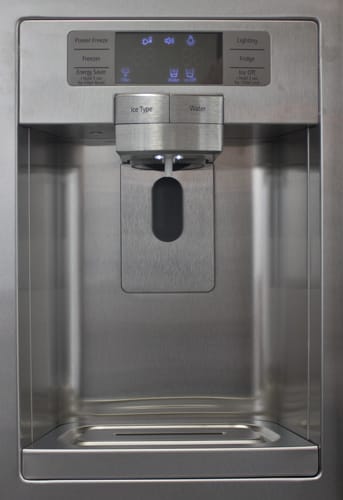
Ice Maker
{{section_header}}{{section.name}}{{/section_header}}
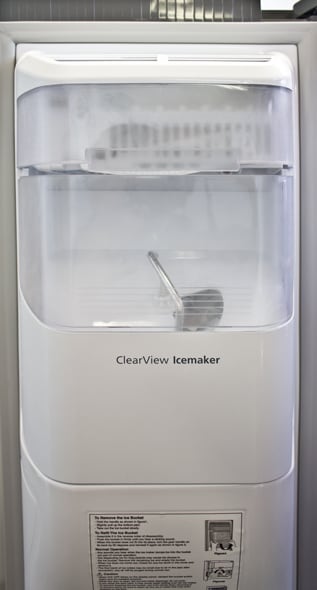
Cleaning
Noise
Other Features
{{section_header}}{{section.name}}{{/section_header}}
{{product.manufacturer_specs['Other Features Photo BROKEN?']}}
Conclusion
Energy Efficiency
Of all the mini fridges we've tested so far, this one was the least energy efficient. Essentially, it boils down to having to pay about $25 per year to operate it instead of, say, $14; it's still not a lot, but proportionally it's a large increase.
Performance
Some of the best performance we've seen in a mini fridge includes solid fridge temperature consistency, outrageously superior moisture retention, and nearly perfect (by the standards of our test) freezer insulation.
Storage Space
It's bigger than an average mini fridge, so it makes sense that the {{product.brand.name}} has more storage room. Plenty of space in the fridge and freezer allows for more varied grocery shopping and accommodates a larger variety of diets.
Usability
The shallow shelves in the fridge and the annoying control knob were unexpected nuisances, but otherwise, this fridge can be handled without any hitch.
Meet the tester
Matthew is a native of Brockton, Mass., and a graduate of Northeastern University, where he earned a degree in English and Theatre. He has also studied at the Gaiety School of Acting in Dublin, Ireland, and spends time pursuing a performance career in the greater Boston and Cambridge area.
Checking our work.
Our team is here to help you buy the best stuff and love what you own. Our writers, editors, and experts obsess over the products we cover to make sure you're confident and satisfied. Have a different opinion about something we recommend? Email us and we'll compare notes.
Shoot us an email